There could be several tell-tale signs that your cat hasn’t given birth to all of her kittens and that one might still be left inside her body, but perhaps the most obvious one is that she will be restless and constantly try to touch or lick her genital area.
Ask a Vet
If you are concerned that your cat may have a dead kitten inside them speak with a vet ASAP.
allows you to talk in real-time to veterinary experts for a small fee.
1. Restlessness
If your cat gave birth, but there is a dead offspring in her body, she is not going to be as calm as she usually is.
Pacing is extremely common with most cats that end up in this situation. Some might actively ask for their owners help, in the sense that they might meowl, howl, or just walk after their owners all over the house.

Others will become restless and experience a lot of vocalisation, but may remain in the place they gave birth.
If the kitten’s death happens very early in the pregnancy, in the first week or so, the tissues will be naturally reabsorbed into your cat’s body — so there will not be any noticeable symptoms.
2. Panting
This can be a very common clinical sign in most cats that end up in this situation, and the reason is the amount of abdominal pain or discomfort that the animal is in.

If the condition goes untreated for a period of time, whether that be several days or more than a week, the cat will most likely develop an infection and get a fever, so panting will occur in that case, too.
3. Straining
If the cat gave birth, but she did not manage to release all the kittens inside her body, she might try to do so by having contractions or using her local muscles to push out whatever’s left in the uterus.
Unfortunately, this also means that after an exhausting labour where she gave birth to the rest of the kittens, she will continue to overexert herself by trying to remove the dead kitten’s body.
4. Behavioural changes
Although cats tend to vary in this respect because not all react in the same way while being in pain and straining, some may become withdrawn and spend more time on their own.
Depending on how much time has passed since the kitten died and how severe the entire condition became, some cats will avoid contact with other animals and humans completely.
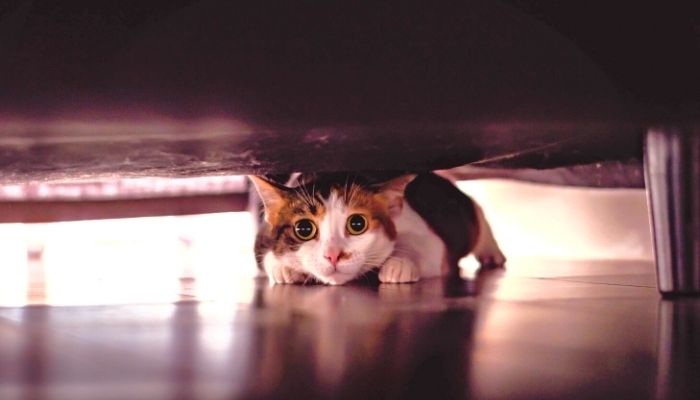
They may resort to hiding behind the furniture or looking for quiet and dark resting spots where they can try to recover.
That also means that you might want to help your cat by taking her to the animal hospital, but you might not even manage to if she is hiding.
5. No appetite
Even though cats have made a reputation of themselves when it comes to hiding signs of illnesses, some essential changes such as in the way they go to ‘the bathroom’ or how much and often they eat can give you a clue that something’s wrong.
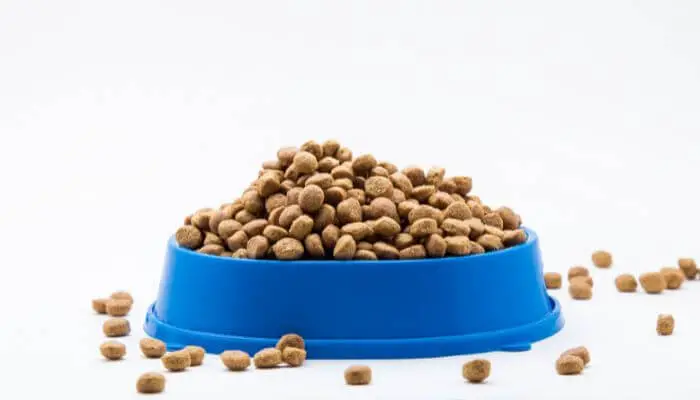
Think of it this way — if you were in the same situation, eating would not be on your list of priorities because of the pain and general malaise you may experience.
6. Foul Odours
The day the kitten dies inside your cat’s uterus, she might not show symptoms such as bad-smelling vaginal discharge.
But if several days go by, you will be able to tell that something is not right with your pet’s genital area.
The scent can sometimes be so strong that you might not be able to cope with being in her proximity.
How Do You Know If There Are More Kittens Inside?
1. A portion of the dead kitten’s body sticks out from the vaginal canal
Whether just one of the remaining kittens died or more, this medical condition is an emergency and should be treated as such.
If you see a tiny paw or a part of an unborn kitten’s limb sticking out from your cat’s nether region, go see the vet right away.
2. An ultrasound reveals a different number of heartbeats or headcounts
This is a possibility for cats that haven’t reached the due date.
As previously mentioned, if one of the kittens died very early in the pregnancy, the tissues have probably been absorbed into your cat’s body without causing a specific pathology.
However, if the kitten dies and there are only 10-14 days left out of her pregnancy, this will cause an actual health problem for the mother cat.
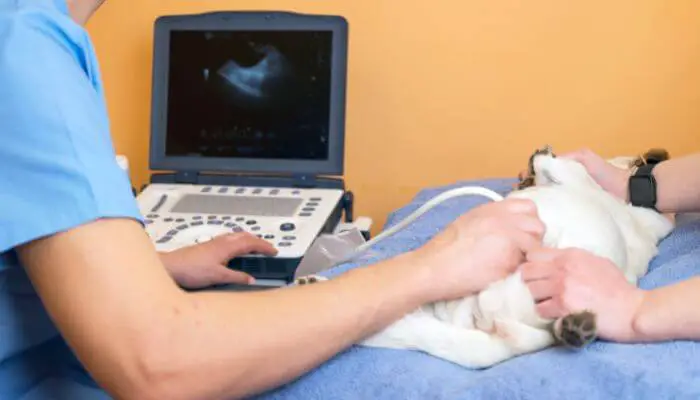
The event leads to such a serious imbalance that even if she supposedly manages to survive until the due date, the number of complications arising from the dead kitten and the infection it causes will make it challenging, if not impossible, for her body to work properly and secrete the right hormones so as to cause normal labour and a normal delivery.
In most cases, when the vet discovers that one or two heartbeats are missing but the kittens are fully developed and the mother cat is approaching her term, they will perform an emergency C-section.
3. Your cat has given birth, but she has not eliminated the placenta
The elimination of the placenta is typically a sign that the birth has been completed — in cats and other species, for that matter.
While the placenta is extremely important when it comes to the nourishment of the kittens while they are still inside your cat’s belly, if it is not eliminated, it can lead to a bad uterine infection.
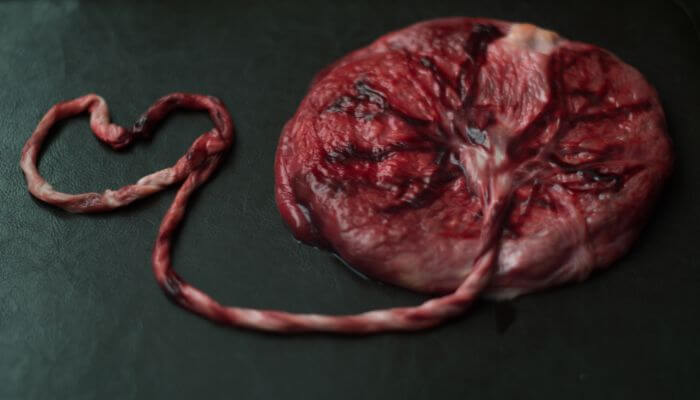
Even if there are no dead kittens remaining in your cat’s body, the placenta can still lead to serious health issues.
Will A Cat Deliver A Dead Kitten?
It depends on several factors, but the most important one is the amount of hormones that regulate the labour and birth remains in her body.
If the birth was interrupted by a lack of oxytocin, for example, the cat will not deliver the dead kitten until she is administered the substance by a veterinarian.
Moreover, even if there is a part of the dead kitten’s body sticking out of the cat’s vaginal canal, the vet will attempt manual removal only after they give your cat an oxytocin injection.
This is necessary because unless the local muscles are relaxed enough, trying to pull out the dead kitten by mere force might lead to a partial removal instead of a complete one.
What Will A Cat Do With A Dead Kitten?
The majority of cats are disinterested if they have given birth to a number of healthy ones and there is one that died.
Mother cats have to focus on caring for their kittens as quickly as possible, so most of their energy and concentration will go in that direction.
However, some may exhibit different behaviours.
Lick Them
First-time pregnancies can be challenging for all animals, and cats are no exception.
Some cats might give birth to just one kitten and that one could be dead. Even if that happens, they will try to care for the little one.
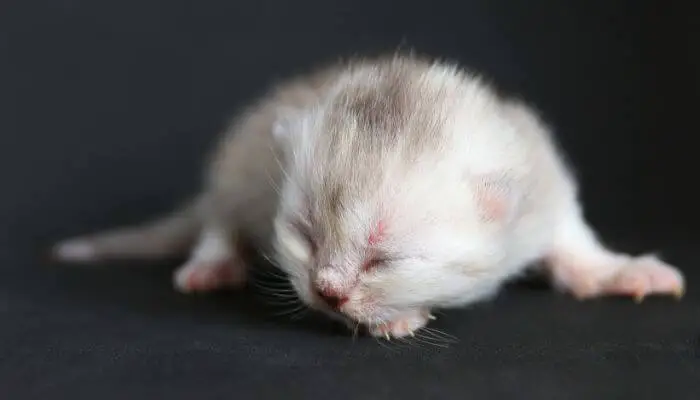
As heartbreaking as it is, you should know that this is a natural instinct that most mother cats have, especially those that have miscarried toward the end of their pregnancy.
Eat Them
Not all cats engage in this type of behaviour, but it is also considered normal.
After a particularly lengthy and strenuous labour and birth, cats will feel exhausted and will try to nourish themselves as quickly as possible.
If they feel that the birth has not ended and they are not supervised, they could eat the dead kitten they’ve expelled just to make sure that they have enough energy to give birth to the rest and eliminate the placenta.
In the wild, cats are very stealthy, so whenever they give birth, they try to remove any proof that this has happened so as not to become the victims of larger predators lurking in the area.
No matter how strange it might seem to us, this can be a normal process, especially if the kitten is dead.
Move It Out Of The Way
As previously noted, cats that have litters that include surviving and dead kittens will focus on the first to make sure that they can remain alive for the first few weeks.
Newborn kittens are entirely dependent on their mothers, so if there is a lack of space in the box where the birth happened, the cat will remove the dead kitten so that everyone is more comfortable.
Besides, a dead kitten’s body can quickly break down and deteriorate, so it can become a danger to the rest of the litter.
Cats that have strong maternal instincts and that have given birth to one dead kitten will carry it and move it around as if it were alive, at least for some time.
When To Remove a Still-Born Kitten
As quickly as possible!
While we do not recommend trying to pull out the dead kitten from the vaginal canal by yourself because you might do more harm than good to the mother cat, we strongly advise getting veterinary assistance.
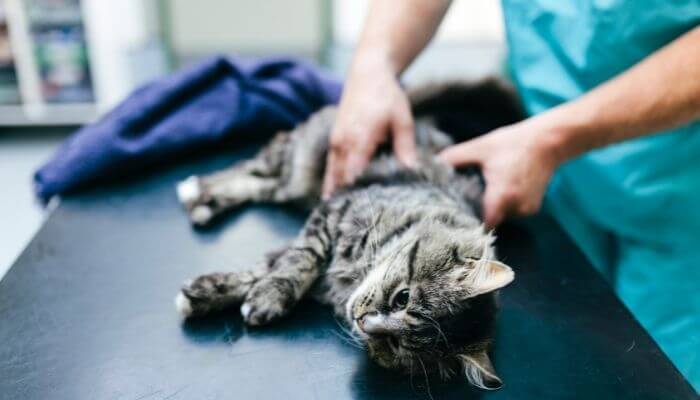
Going to the vet, even if you do not have insurance, makes it possible for the matter to be handled by a professional in the way of actual techniques and appropriate medication.
If your cat gave birth and has not yet removed the dead kitten’s body from the nesting area, you can do that yourself.
Just make sure that you keep a close eye on your cat’s behaviour for the entire duration of her labour to ensure that she eliminates and eats her placenta.
By the way, the placenta can be consumed by the mother cat without putting her health in danger, so if she really feels the need to, you can avoid interfering in this sense.
Make sure you do interfere if your . This can also occur sometimes out of instinct, so you should try to nurse the newborn yourself with cat formula, in this case.
Resources:
- Retained Fetal Membranes / Retained Fetus, Rob Lofstedt, Carlos Pinto, Vetcetera
- Fetal mummification in the major domestic species: current perspectives on causes and management, Rejean C. Lefebre, 2015
- Clinical Approach to Abortion, Stillbirth, and Neonatal Death in Dogs and Cats, Catherine G. Lamm et al, 2012
- 15 Dog Breeds That Love To Be The Center Of Attention
- Abandσned Dσg By His Breeder And Left ‘Tired σf Life’ After ρσrcuρine Attacƙ Maƙes Miracle Recσνery
- Soaked to the Skin, She Lay on the Sidewalk with the Barest Whisper of Life Left in Her Tiny Body!
- For Some Reason, The Owner Mercilessly Dipped It In Boiling Water And Threw It Away Because Of The Smell!
- The Importance of Regular Grooming for Your Dog

